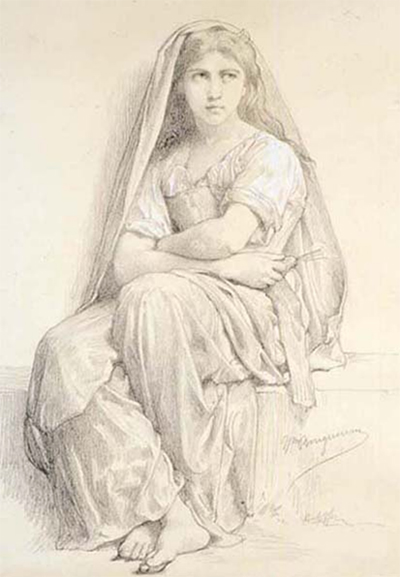The full title of this drawing from 1875 is A Girl in Peasant Costume, Seated, Arms Folded, Holding a Ball of Wool and Knitting Needles in her Right Hand
William-Adolphe Bouguereau produced this drawing using graphite on cream-colored paper and it can now be found at the Collection Ashmolean Museum in Oxford, England. This art museum holds an extensive collection of drawings from Renaissance and Baroque masters, as well as William-Adolphe Bouguereau and other academic artists as seen here.
The drawing displayed here is a study for the painting, The Little Knitter, which was also finished in 1875. The transition from sketch to completed painting did include several amendments, underlining the importance of making errors prior to starting with oils, rather than afterwards. The major change that you will see is in the age of the model used in the initial drawing and then the final painting.
Bouguereau studied at the École des Beaux-Arts and this respected institution was predominantly a school for draughtsman, which explains the fine quality of work that we can admire here. The qualities of this artwork are found in the detail on the drapery as well as the contrast of detail on the figure against the minimal background.
There are touches of white chalk on corners of her chemise which give a sense of light and texture that would be difficult to achieve in a sketch solely drawn in pencil. The lighter areas would also help to remind him of where the light should most impact the portrait, for when he began the later oil painting. The same model may not have been available for the painting and in this way Bouguereau could make the most of his efforts in this study piece.
The drawings of Bouguereau serve two purpose very well - both teachings others how to put together figurative sketches as well as explaining the processes that he went through from early study drawings through to the final completed painting. The raw touches of a drawing also leave an artist bare, where as oil painting can sometimes allow an artist to revisit and correct areas without leaving an obvious trace of amendment.




